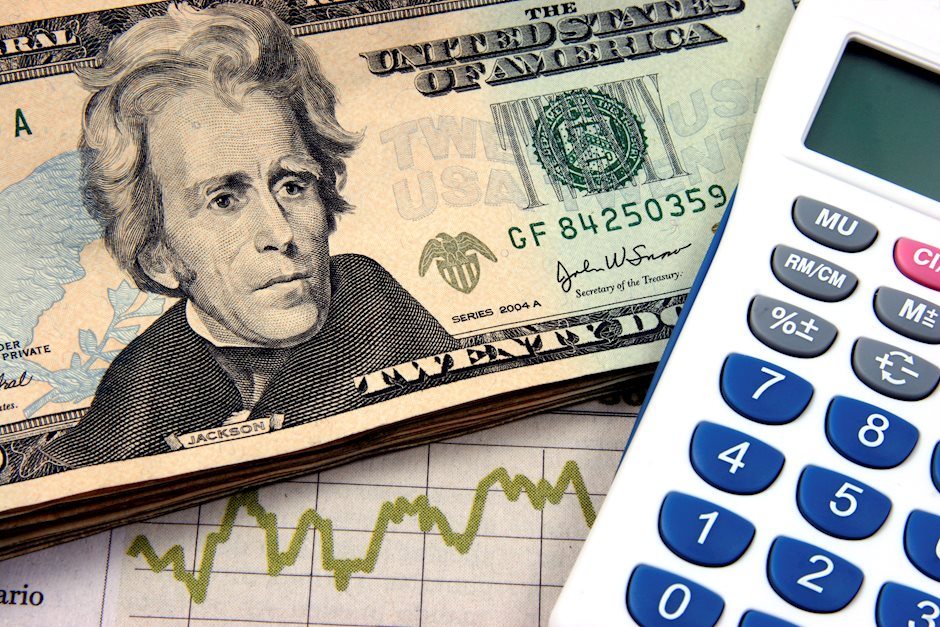US Dollar hits session high while US data keeps going strong
- The US Dollar recovers early Monday selling pressure after stronger US Retail Sales.
- Tradersdive back into the Greenback on US exceptionalisme.
- The US Dollar Index heads back to 106.00.

The US Dollar (USD) delivers a knee jerk reaction at the start of the US session this Monday with US Retail Sales coming in higher than expected on all fronts. The Greenback was facing some selling pressure this Monday morning with markets heading out of safe haven elements after Iran said it does not look to escalate further tensions in the Middle East. Markets are now digesting all elements in order to assess wether to send the US Dollar Index to test the highs of this year again.
On the economic data front, all US data this Monday further confirmed US exceptionalism. New Yed Fed President John Williams meanwhile said on Bloomberg television that the recent US Consumer Price Index (CPI) was not a turning point for the Fed to consider changing its stance. This view could be key ahead of US Fed Chairman Jerome Powell's speech on Tuesday.
Daily digest market movers: US outperforms
- Most of the US data has been released:
- The NY Empire Manufacturing Index for April went from -20.9 to -14.3, coming in below the -9 expectation.
- The US Census Bureau has published the Retail Sales for March:
- Retail Sales ju,ped from 0.6% to 0.7%, with the 0.6% fom February revised up to 0.9%.
- Retail Sales excluding transportation went from 0.3% to 1.1%, while the 0.3% from February got revised to 0.6%.
- At 14:00 GMT, the February Business Inventories went from 0% to 0.4%.
- At 15:30 GMT, the US Treasury will auction a 3-month and a 6-month bill.
- Equities are taking a turn for the worse and are giving up all their Monday gains.
- According to the CME Group’s FedWatch Tool, expectations for a Fed pause in the May meeting are at 97.4%, while chances of a rate cut stand at 2.6%. The odds of a September rate cut have increased and are now higher than a cut at the June meeting.
- The benchmark 10-year US Treasury Note trades around 4.56%, slightly higher than the opening price for this week at 4.53%.
US Dollar Index Technical Analysis: Getting costly
The US Dollar Index (DXY) is easing on Monday ahead of the US Retail Sales numbers. The main driver for the retracement comes after Iran issued a statement this Monday saying that it does not want to seek any escalation in the Middle East. Markets are sending European and US equities higher, while safe-haven currencies are easing a touch, with the DXY Index retreating below 106.00.
On the upside, the first level for the DXY is the November 10 high at 106.01, just above the 106.00 figure. Further up and above the 107.00 round level, the DXY Index could meet resistance at 107.35, the October 3 high.
On the downside, the first important level is 105.88, a pivotal level since March 2023. Further down, 105.12 and 104.60 should also act as a support, ahead of the region with both the 55-day and the 200-day Simple Moving Averages (SMAs) at 103.97 and 103.84, respectively.
Risk sentiment FAQs
In the world of financial jargon the two widely used terms “risk-on” and “risk off'' refer to the level of risk that investors are willing to stomach during the period referenced. In a “risk-on” market, investors are optimistic about the future and more willing to buy risky assets. In a “risk-off” market investors start to ‘play it safe’ because they are worried about the future, and therefore buy less risky assets that are more certain of bringing a return, even if it is relatively modest.
Typically, during periods of “risk-on”, stock markets will rise, most commodities – except Gold – will also gain in value, since they benefit from a positive growth outlook. The currencies of nations that are heavy commodity exporters strengthen because of increased demand, and Cryptocurrencies rise. In a “risk-off” market, Bonds go up – especially major government Bonds – Gold shines, and safe-haven currencies such as the Japanese Yen, Swiss Franc and US Dollar all benefit.
The Australian Dollar (AUD), the Canadian Dollar (CAD), the New Zealand Dollar (NZD) and minor FX like the Ruble (RUB) and the South African Rand (ZAR), all tend to rise in markets that are “risk-on”. This is because the economies of these currencies are heavily reliant on commodity exports for growth, and commodities tend to rise in price during risk-on periods. This is because investors foresee greater demand for raw materials in the future due to heightened economic activity.
The major currencies that tend to rise during periods of “risk-off” are the US Dollar (USD), the Japanese Yen (JPY) and the Swiss Franc (CHF). The US Dollar, because it is the world’s reserve currency, and because in times of crisis investors buy US government debt, which is seen as safe because the largest economy in the world is unlikely to default. The Yen, from increased demand for Japanese government bonds, because a high proportion are held by domestic investors who are unlikely to dump them – even in a crisis. The Swiss Franc, because strict Swiss banking laws offer investors enhanced capital protection.
Author

Filip Lagaart
FXStreet
Filip Lagaart is a former sales/trader with over 15 years of financial markets expertise under its belt.
















